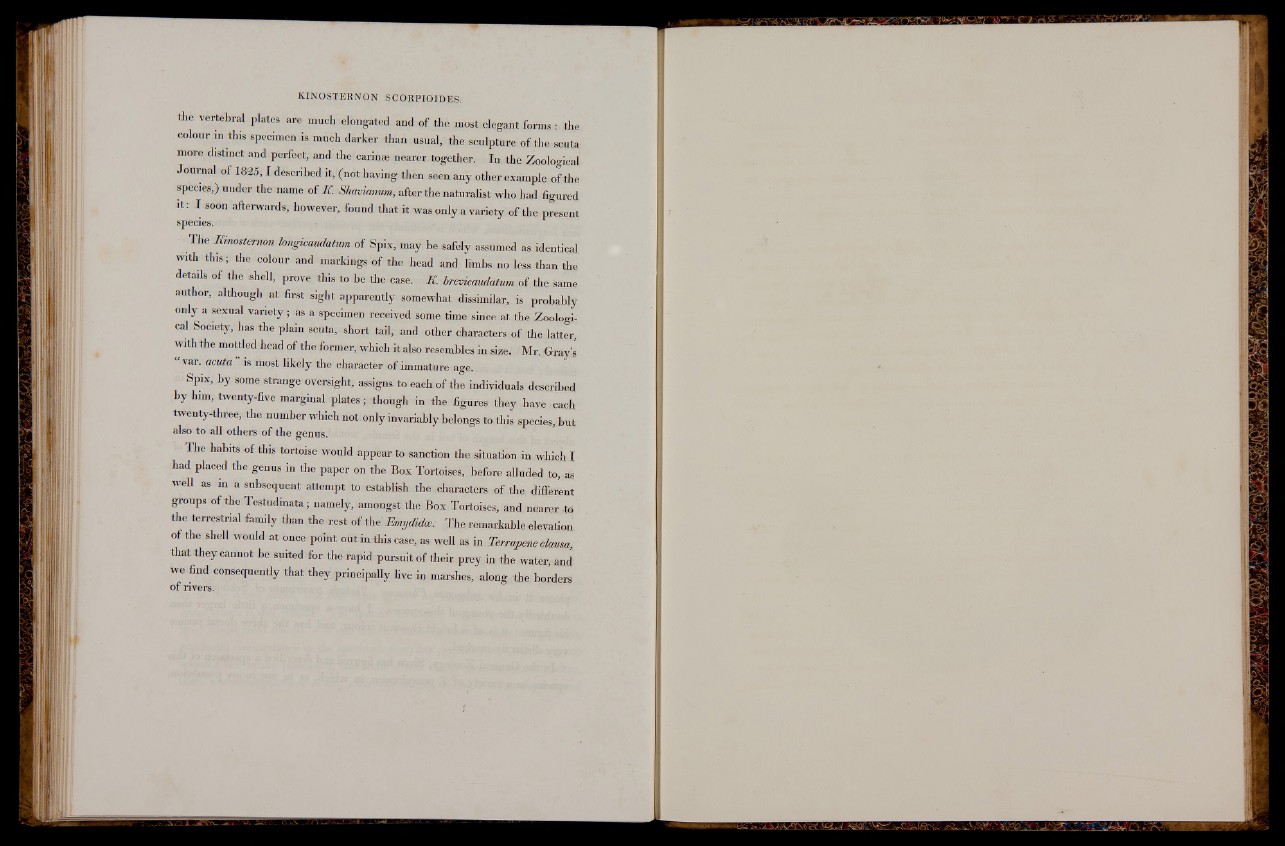
KINOSTERNON SCORPIOIDES.
the vertebral plates are much elongated and of the most elegant forms : the
colour in this specimen is much darker than usual, the .sculpture of the ;scuta
more distinct and perfect, and the carinas nearer together. In the Zoological
Journal of 1825,1 described it, (not having then seen any other example of the
species,) under the name of K Shavianum, after the naturalist who had figured
it: I soon afterwards, however, found that it was only a variety of the present
species.
The Kinosternon longicaudatum of Spix, may be safely assumed as identical
with this; the colour and markings of the head and limbs no less than the
details of the shell, prove this to be the case. R.hrevicaudatum of the same
author, although at first sight apparently somewhat dissimilar, is probably
only a sexual variety; as a specimen received some time since at the Zoological
Society, has the plain scuta, short tail, and other characters of the latter,
with the mottled head of the former, which it also resembles in size, Mr. Cray’s
var. acuta is most likely the character of immature age,
Spix, by some strange oversight, assigns to each of the individuals described
by him, twenty-five marginal plates; though in the figures they have each
twenty-three, the number which not only invariably belongs to this species, but
also to all others of the genus.
The habits of this tortoise would appear to sanction the situation in which I
had placed the genus in the paper on the Box Tortoises, before alluded to,,as
well as m a subsequent attempt to establish the characters of the different
groups of the Testudinata; namely, amongst the Box Tortoises, and nearer to
the terrestrial family than the rest of the Emydidce. The remarkable elevation
of the shell would at once point out in this case, as well as in Terrapene clausa,
that :they cannot be suited for the rapid pursuit of their prey in the water, and
we find consequently that they principally live in marshes, along the borders
of rivers.